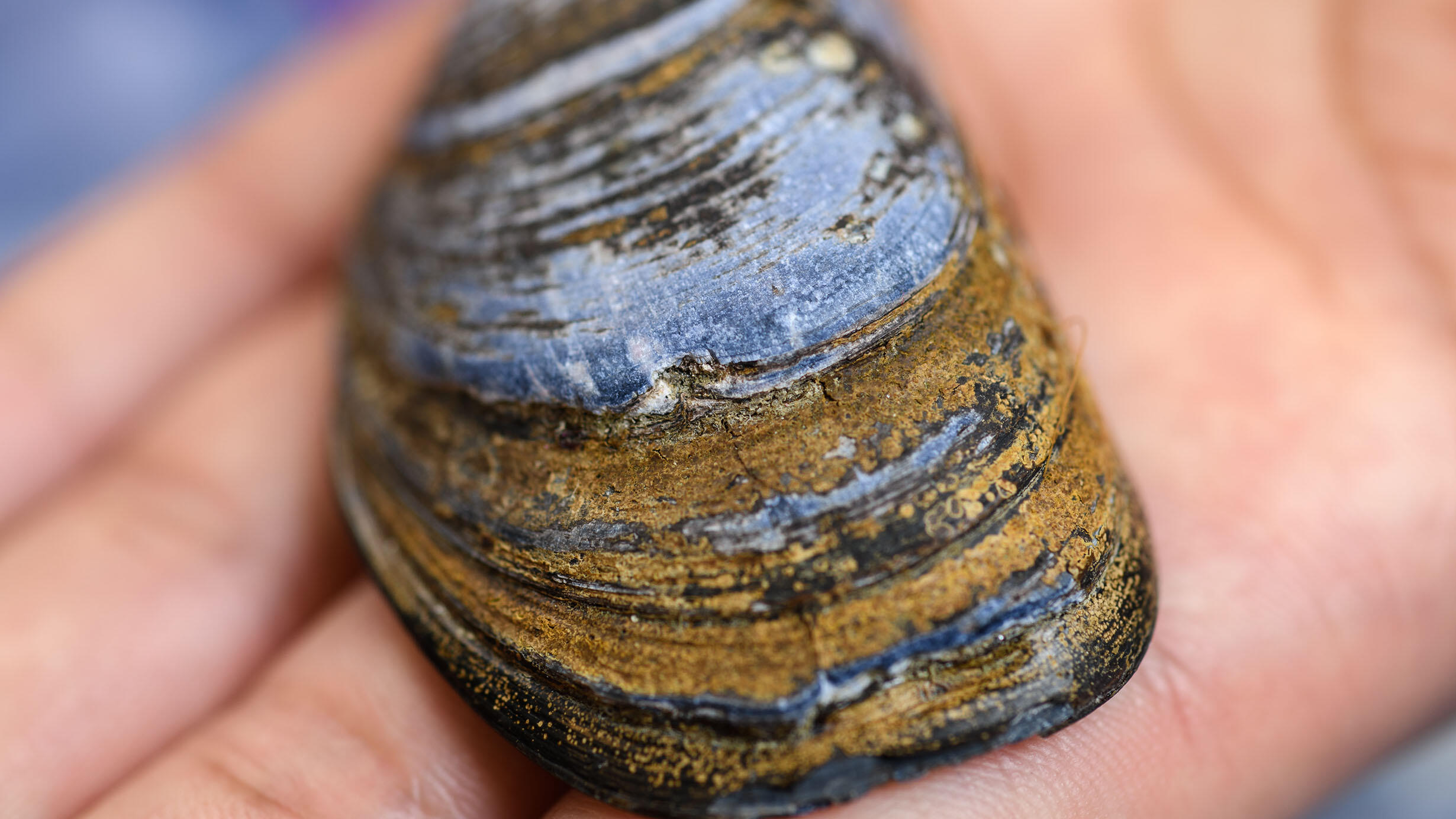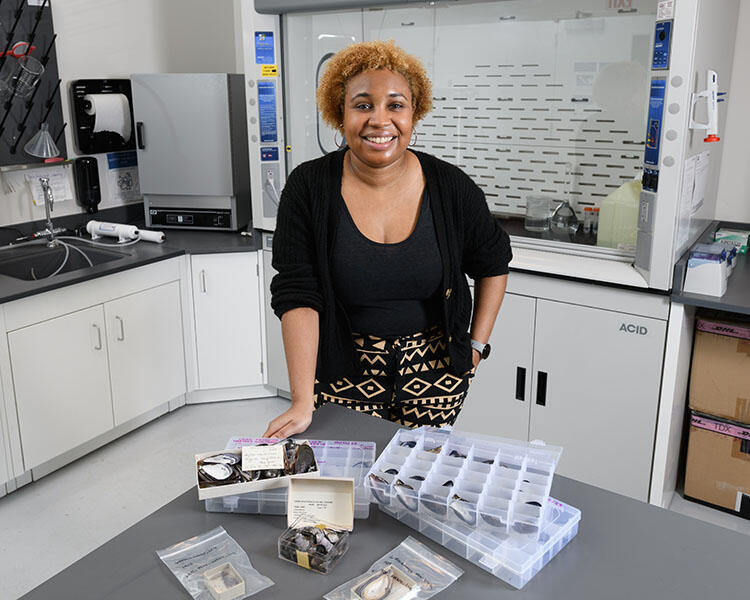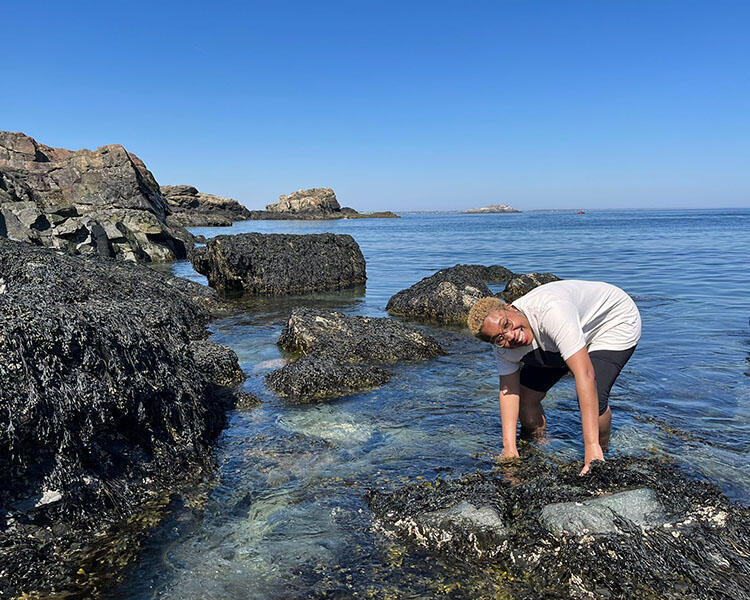 The blue, or common, mussel (Mytilus edulis).
The blue, or common, mussel (Mytilus edulis).Daniel Kim/ ©AMNH
Blue mussels are a common sight along the coast—and in restaurants—of the U.S. East Coast. In addition to being commercially important, these bivalves play vital ecological roles by filtering water, protecting coasts during storms, and providing reef habitats.
But a new Museum study shows how warming in the north Atlantic could be making their shells more porous, undermining mussels’ overall health.
“Human-caused environmental changes are threatening the ability of mussels and other mollusks to form their shells, and we need to better understand what risks will come from this in the future,” said Leanne Melbourne, a Kathryn W. Davis postdoctoral fellow in the Museum’s Master of Arts in Teaching program and the lead author on the study, which was published today in the journal PLOS ONE.
 Lead author Leanne Melbourne with a selection of the modern and historic mussel shells used in the new study.
Lead author Leanne Melbourne with a selection of the modern and historic mussel shells used in the new study.Daniel Kim/ ©AMNH
 Lead author Leanne Melbourne collecting mussel shells on Canoe Beach in Nahant Bay, Massachusetts.
Lead author Leanne Melbourne collecting mussel shells on Canoe Beach in Nahant Bay, Massachusetts.Maria Rosabelle Ong
To investigate long-term environmental impacts on blue, or common, mussels (Mytilus edulis), Melbourne pulled specimens from the early 1900s and the 1960s from the Museum’s extensive bivalve collection. She then collected modern samples from five coastal sites in Massachusetts, Connecticut, New York, and New Jersey and matched them to the historical specimens, comparing measurements of shell thickness, surface area and volume, and density and porosity.
Melbourne and co-author Nathalie Goodkin, a curator in the Museum’s Department of Earth and Planetary Sciences, found that over the last 120 years, the porosity—a measure of the miniscule holes—in blue mussel shells has increased.
The study showed that modern shells are significantly more porous than those collected in the 1960s and more porous than shells collected at some of the sites in the early 1900s, and that increased porosity was linked to warming waters: the North Atlantic has experienced seasonal temperature increases of up to 3 degrees Celsius (5.4 degrees Fahrenheit) since 1902. The warming has not been uniform, which may account for some of the variations in porosity in historical specimens, as does the influence of the North Atlantic Oscillation, a weather phenomenon that brought colder-than-expected water temperatures in the 1960s.
“Museum collections are ideal for showing change over long stretches of time,” said Goodkin. “Organisms in natural environments have slow exposure to changing conditions, with more time to adapt and more than one stressor.”
Previous work has shown that mollusk shells with high porosity can be weaker and potentially more susceptible to damage, and more research is needed to determine how temperature change could be affecting these mussel populations.